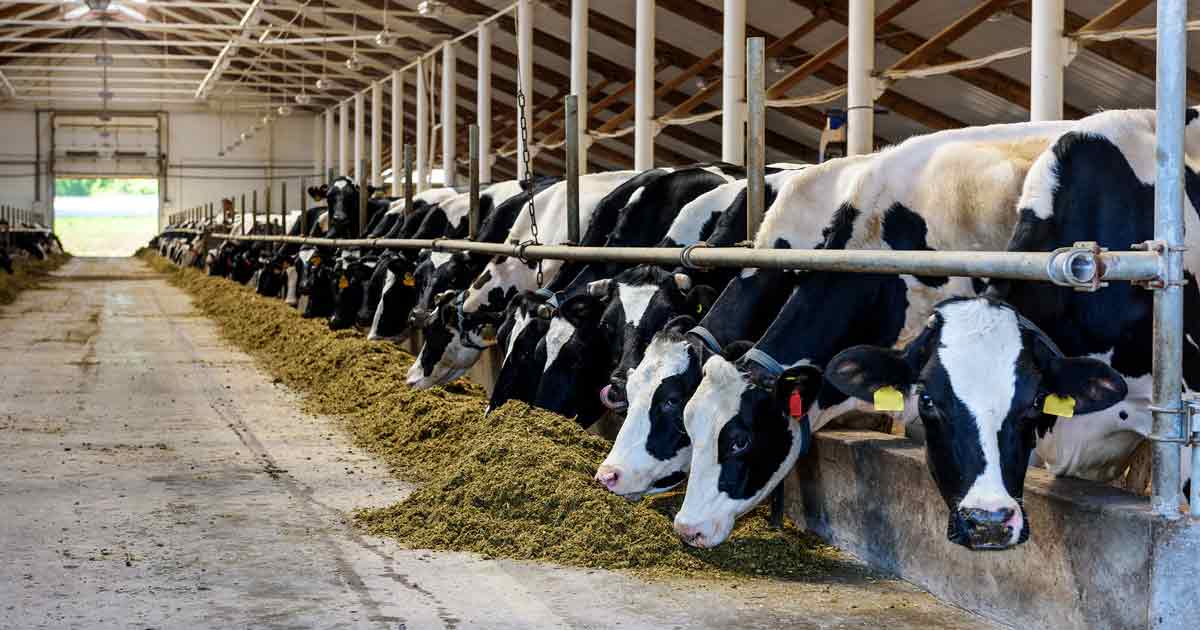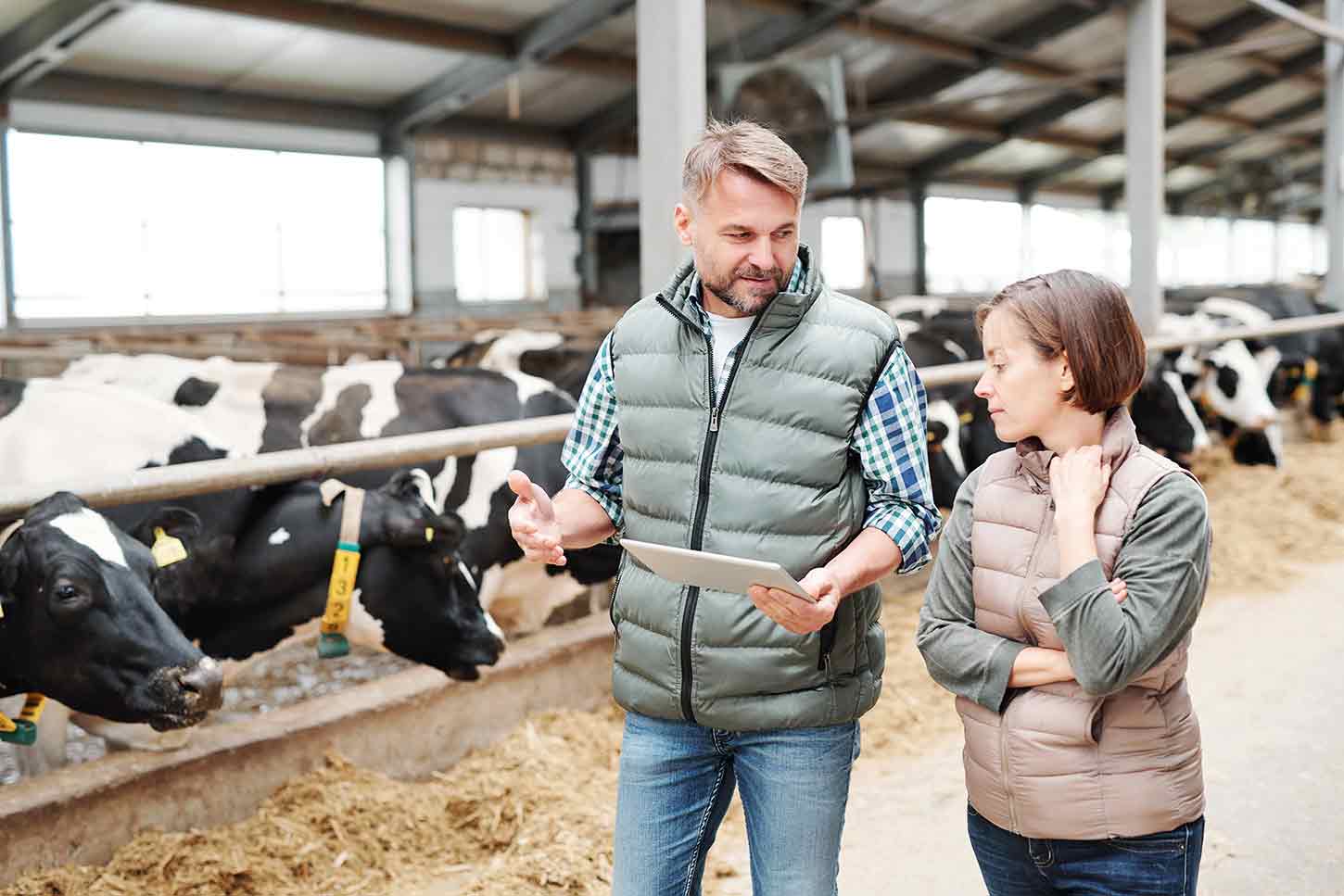12 Apr 2021
Bovine respiratory disease: working with farmers to initiate real change
A complex disease with immediately identifiable costs and clear long-term impacts on the animal, bovine respiratory disease requires a team approach to diagnose, treat and prevent it on farm, writes Jenny Allan.

Calf housing and good ventilation are key to prevention strategies. IMAGE: © Suslov Denis / Adobe Stock

Bovine respiratory disease (BRD) is a complex, multifactorial disease with clear long-term impacts. Certain costs are immediately identifiable, including veterinary and medicine costs, but Andrews (2000) estimated that these were only 40% of the total cost of an outbreak, with mortality, weight loss and labour making up the remaining 60%.
However, the majority of the costs associated with a BRD outbreak are the longer-term impacts on the animal, including reduction in daily live weight gain (DLWG) potentially impacting age of first calving (AFC). Boulton et al (2015) quoted a figure of £1.64 per day for heifers reared across 24 months. The increased chance of mortality and increased risk of subsequent pneumonia episodes can also result in earlier exit from the herd.
Diagnostics and treatment
Diagnostics for pneumonia cases have advanced in the past few years (Buczinski and Pardon, 2020; Pardon and Buczinski, 2020) and a priority is to focus on the early detection of pyrexia.
Once clinical signs of coughing, lethargy and nasal discharge are seen, often a secondary bacterial infection has established (Smith et al, 2020). Focusing on early detection enables treatment to reduce the impact of lung consolidation and irreversible damage. Pyrexia detection technology can be a useful aid alongside good stockmanship. Examples include ear tags with thermometer probes that continually measure body temperature. These use a temperature rise above a pre-set threshold for a certain number of hours to trigger a visual alarm.
Calves reared on milk machines may reduce volumes consumed prior to more obvious clinical signs, so using warning systems from these machines can prompt staff to examine the calf (Wolfger et al, 2015).
Pneumonia is a large driver of antibiotic use on farms. It was thought the theory of treating cases earlier may reduce the need for antibiotics, as calves would be detected while in the primary viral phase, prior to secondary infection. However, Mahendran et al (2017) found that only 25.7% of calves detected early with pyrexia required NSAIDs, with the rest still needing antimicrobial treatment. The advantage of early treatment is the reduction of inflammatory damage to the lung tissue from the infection.
The three most commonly used antimicrobial classes used in the UK include tetracyclines, amphenicols and macrolides. Under the World Health Organization’s antimicrobial guidelines, macrolides are now classed as high-priority critically important antimicrobials (World Health Organization, 2018) and, therefore, milk buyers are discouraging their use as first-line treatments. Tetracyclines have had the most resistance from Mannheimia haemolytica documented (VMD, 2019), leaving producers needing to repeat treatments or having to use an alternative antimicrobial.
Work last year on Mycoplasma bovis has also shown resistance to macrolides in Belgium (Bokma et al, 2020). However, florphenicol still has minimal resistance documented to these pathogens (VMD, 2019) and is becoming widely used as a first-line treatment, although it’s efficacy needs to be protected with prudent use.
Metaphylaxis treatment of groups of calves should only be used in firefighting an outbreak situation and not be relied on long term – for example, in an M bovis outbreak. In 2013, the VMD issued a statement that chlortetracycline oral powder cannot be used in group treatments, and can only be given to individual sick animals (VMD, 2021).
Prevention
While diagnostics and treatment advances have been made in the past 10 years (Buczinski and Pardon, 2020; Pardon and Buczinski, 2020), the key to management of any disease is prevention. How calves are reared pre-weaning and any vaccination protocols used will have a big impact.
Many different vaccines are now available (Sherwin and Down, 2018). When selecting vaccination protocols it is key to identify the pathogens present on farm and know what age group of animals is being affected. Vaccinating calves prior to three months old is challenging due to the presence of maternally derived antibodies (MDAs). These will affect efficacy of vaccines (Niewiesk, 2014).
Ideally, the point at which MDA titres start to drop should be sought, although this is not realistic in most farm settings. Giving localised immunity in the form of an intranasal vaccine is a good compromise and stimulates local immunoglobulin A antibody production. For longer-term cover, boosters need to be administered systemically once MDAs have dropped at a later date (Sherwin and Down, 2018).
Environmental challenge is also a huge contributory factor. Calf housing and good ventilation are key. Bacterial counts of the air in the calf microclimate is associated with increased respiratory disease (Lago et al, 2006). To keep pathogen burdens low and air fresh, calves require air to move above them. Opening sides of barns or taking off metal sheets from sheds are simple, cost-effective ways to increase air flow, but farmers must ensure calves have bales or boards to stop draughts at their level.
Farmers will often comment that calf pneumonia cases increase during spells of mild, humid weather. If farmers rely on natural ventilation then during spells of still weather pathogens are likely to be transmitted easily after exhalation. Mechanical ventilation can mitigate this risk, as clean air is drawn into buildings and stale air is pushed out. Ideally, air should be changed in buildings a minimum of 10 times an hour (DairyCo, 2012), and adequate outlet space must be provided, otherwise pathogen-filled air will just recirculate.
Moisture content in sheds is also key. Good drainage and frequent cleaning out is essential; if humidity levels climb above 75%, pathogens are able to survive for several minutes in the air, increasing the chances of transmission (DairyCo, 2012). Humidity and temperature loggers are readily available for little cost; a simple humidity graph from a period of two weeks in a calf shed can be a useful visual aid in conversations around housing.
Biosecurity is also a key factor in Mycoplasma control. Pardon et al (2020) have shown housing newly purchased cattle in shared airspaces is a significant risk factor of M bovis outbreaks. In calves, M bovis usually manifests as pneumonia, causing chronic necrotic lung lesions. These lung lesions can lead to calves with poor DLWG and subsequently poor doing heifers, which will never be fully productive or leave the herd early.
Once M bovis has affected a group of calves, hygiene is of the utmost importance to stop its spread. It can survive on fomites in warm, humid conditions for up to 48 hours (Justice-Allen et al, 2010). In group housing, nose-to-nose contact with older animals in the same airspace can also increase the risk of colonisation of the upper respiratory tract.

Long-term effects
Besides the direct implications of treating sick calves and losses through mortality, the long-term effects of pneumonia will impact on herd productivity. Lung consolidation and scarring after pneumonia episodes are directly related to many performance KPI measures.
Much evidence now supports the fact that DLWG in the first few months of life has an impact on AFC (Wathes et al, 2014) and first lactation yield (Gelsinger et al, 2016; Soberon et al, 2012). Lung tissue consolidation as a result of pneumonia will directly impact on DLWG (Cramer and Ollivett, 2019; Hurst et al, 2021), subsequently affecting that vital early growth. Pneumonia pre-weaning has also been documented to directly affect first lactation yield (Dunn et al, 2018), earlier risk of culling and late AFC (Stanton et al, 2012; Teixeira et al, 2017).
Alongside the animal welfare and productivity factors surrounding pneumonia, an environmental impact exists, too. The impact of early exit from the herd, and having to raise excess cattle to account for the losses experienced, equates to excess greenhouse gasses being emitted unnecessarily (Llonch et al, 2017).
Increasing the length of productive life has been seen to reduce carbon emission intensity (carbon emissions per unit of milk produced; Grandl et al, 2019), and with pneumonia directly impacting length of life in the herd, this adds yet another reason for farmers and vets to prioritise pneumonia prevention.
